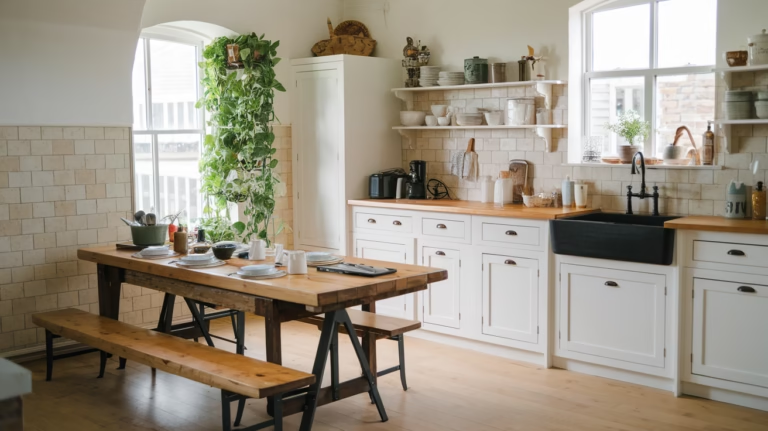In today’s fast-paced world, more people are turning to Japanese interior design principles to create peaceful, minimalist spaces that promote rest and tranquility. At the heart of traditional Japanese bedroom design lies the tatami mat, a centuries-old flooring option that brings natural elements and cultural significance into your sleeping space. In this comprehensive guide, we’ll explore 15 inspiring tatami bedroom ideas that blend traditional Japanese aesthetics with modern comfort.
What Are Tatami Mats?
Before diving into design ideas, it’s essential to understand what tatami mats are. These traditional Japanese floor coverings are made from woven rush grass (igusa) wrapped around a rice straw core. The standard size of a tatami mat is approximately 1.91 x 0.95 meters, and rooms are typically measured by the number of tatami mats they can hold.
Why Choose a Tatami Bedroom?
Tatami bedrooms offer numerous benefits:
- Natural temperature regulation
- Improved air quality through natural materials
- Versatile space usage
- Connection to Japanese culture and traditions
- Enhanced aesthetic appeal
- Eco-friendly flooring option
Now, let’s explore 15 stunning tatami bedroom ideas that can transform your space into a serene sanctuary.
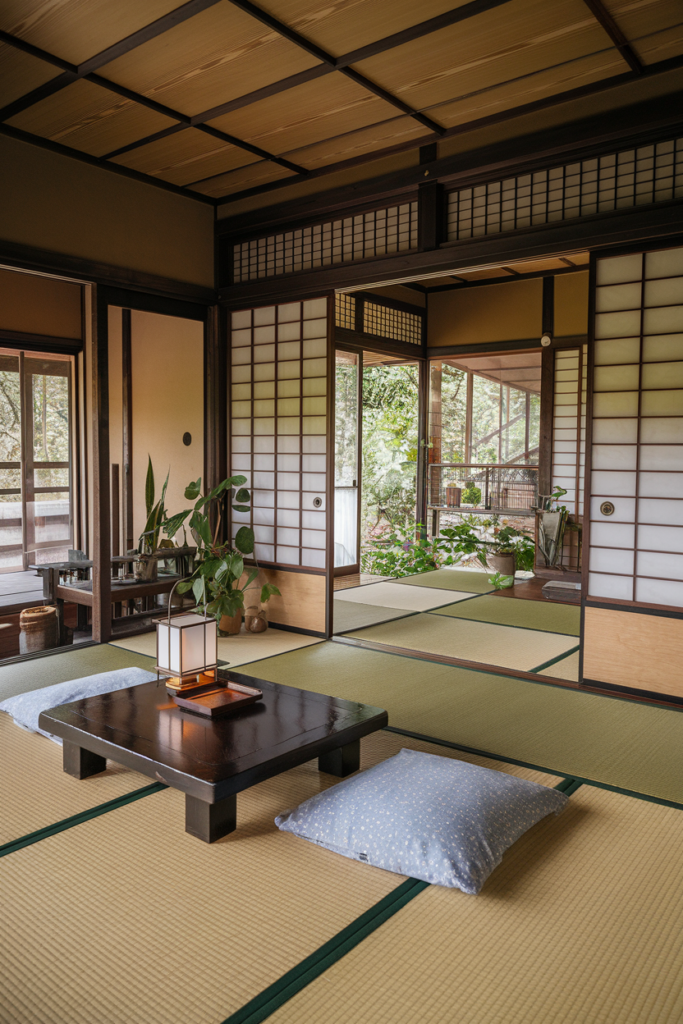
1. Traditional Minimalist Haven
The essence of a traditional tatami bedroom lies in its simplicity. Start with wall-to-wall tatami flooring and keep furniture to a minimum. Include a low-profile futon that can be rolled up during the day, creating a multi-functional space. Add shoji screens (paper sliding doors) to filter natural light and create soft shadows throughout the day. Complete the look with neutral wall colors like warm beige or soft white to enhance the natural texture of the tatami.
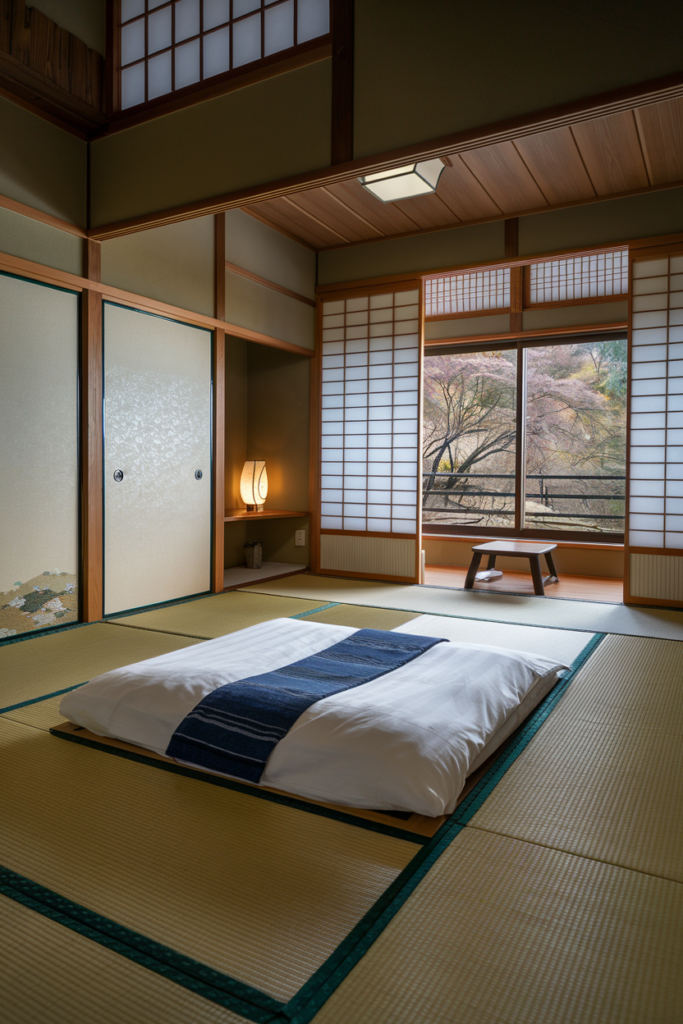
2. Modern Hybrid Design
Blend contemporary comfort with traditional elements by incorporating a platform bed instead of a futon. Keep the tatami mats as the foundational flooring but add modern touches like built-in LED lighting along the platform’s base. Choose furniture with clean lines and natural materials like maple or cherry wood to complement the tatami’s organic feel. This approach maintains the zen aesthetic while providing Western-style sleeping comfort.
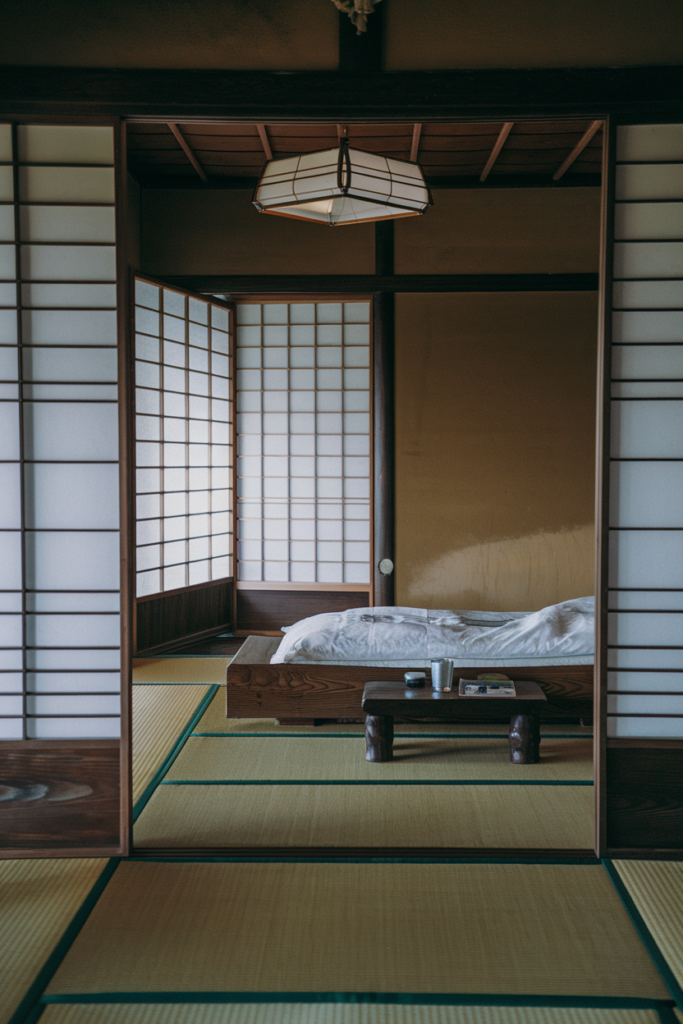
3. Tea Room Inspired Sleeping Space
Create a sophisticated sleeping area inspired by traditional Japanese tea rooms. Install a tokonoma (decorative alcove) to display seasonal artwork or ikebana (flower arrangements). Use washitsu-style sliding doors and incorporate a small chabudai (low table) that can be stored when not in use. This design creates a multi-purpose space perfect for both relaxation and meditation.
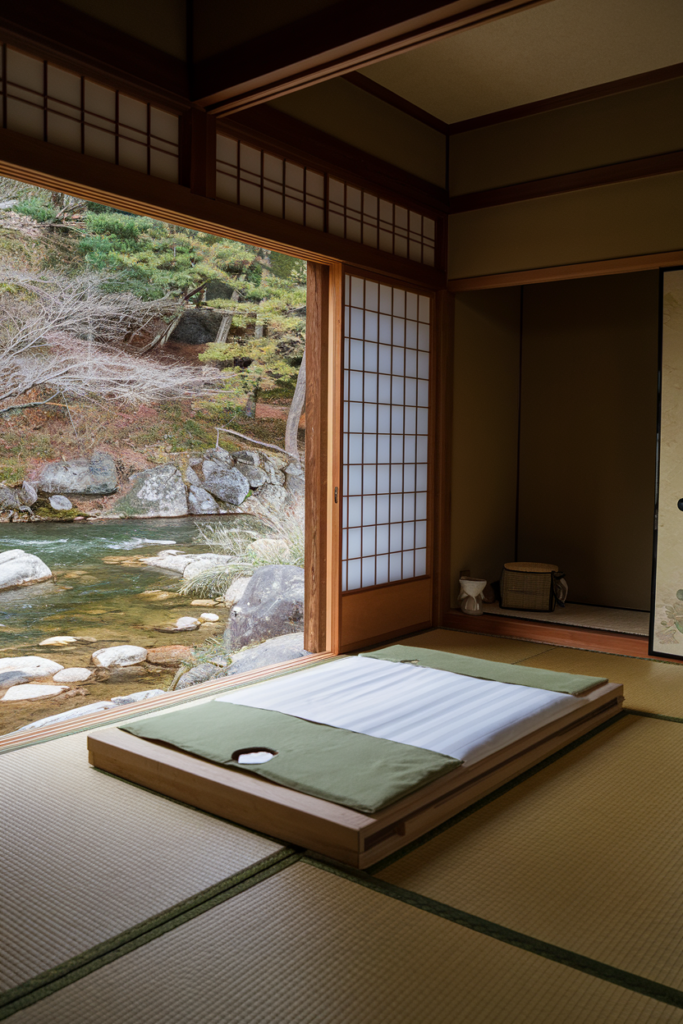
4. Natural Light Enhancement
Maximize natural light in your tatami bedroom by installing floor-to-ceiling windows or glass sliding doors. Use light, translucent curtains or bamboo blinds for privacy while maintaining the flow of natural light. Position your sleeping area to face east, allowing the morning sun to naturally wake you. The interplay of light and shadow on the tatami creates beautiful patterns throughout the day.
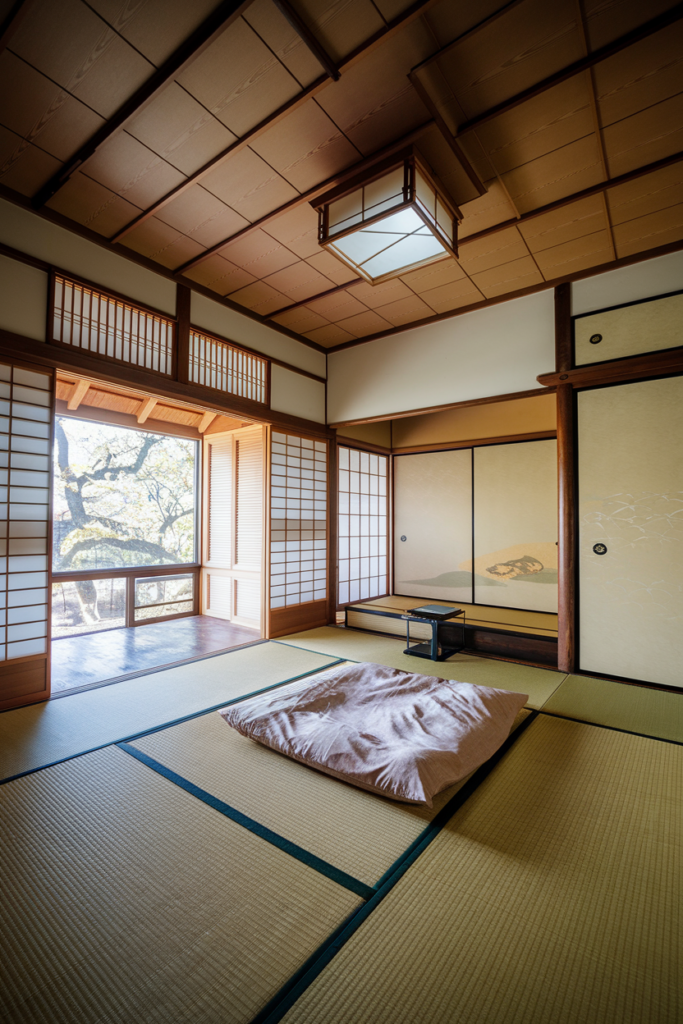
5. Elevated Tatami Platform
Design a raised tatami platform area for your sleeping space, creating a distinct zone within the room. This elevation can include built-in storage underneath, maximizing functionality. Edge the platform with wooden trim in a darker shade to create visual contrast. This design adds architectural interest while maintaining the traditional tatami aesthetic.
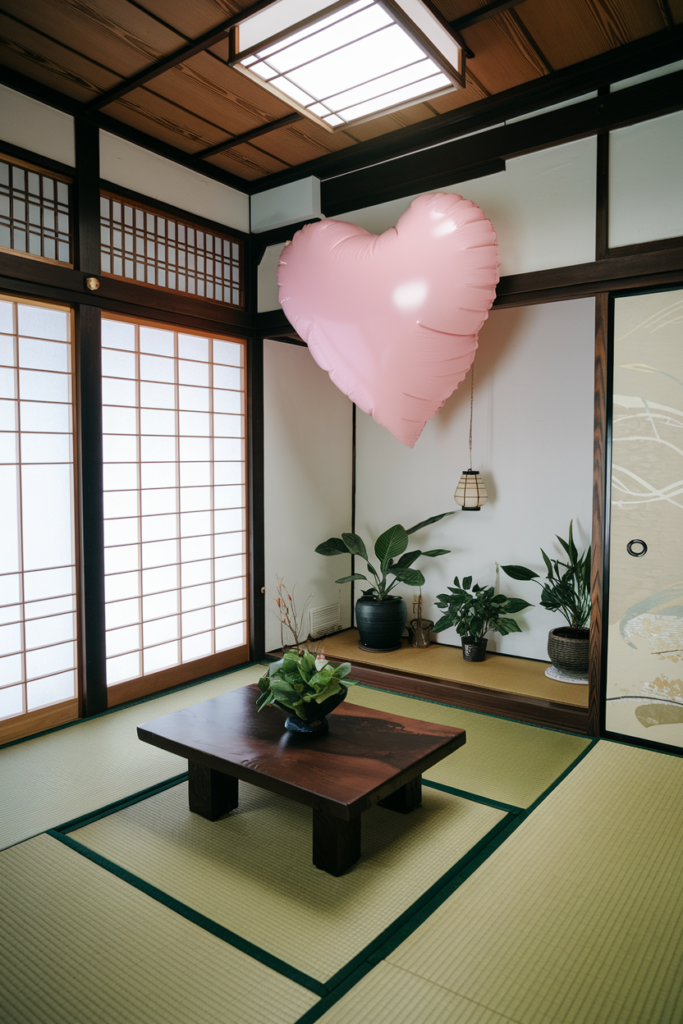
6. Zen Garden View
If possible, position your tatami bedroom to overlook a small Japanese garden or create one outside your window. Install large windows or glass doors to bring the outside in. Use natural materials like stone, wood, and bamboo to create a seamless transition between indoor and outdoor spaces. This connection to nature enhances the calming effect of the tatami room.
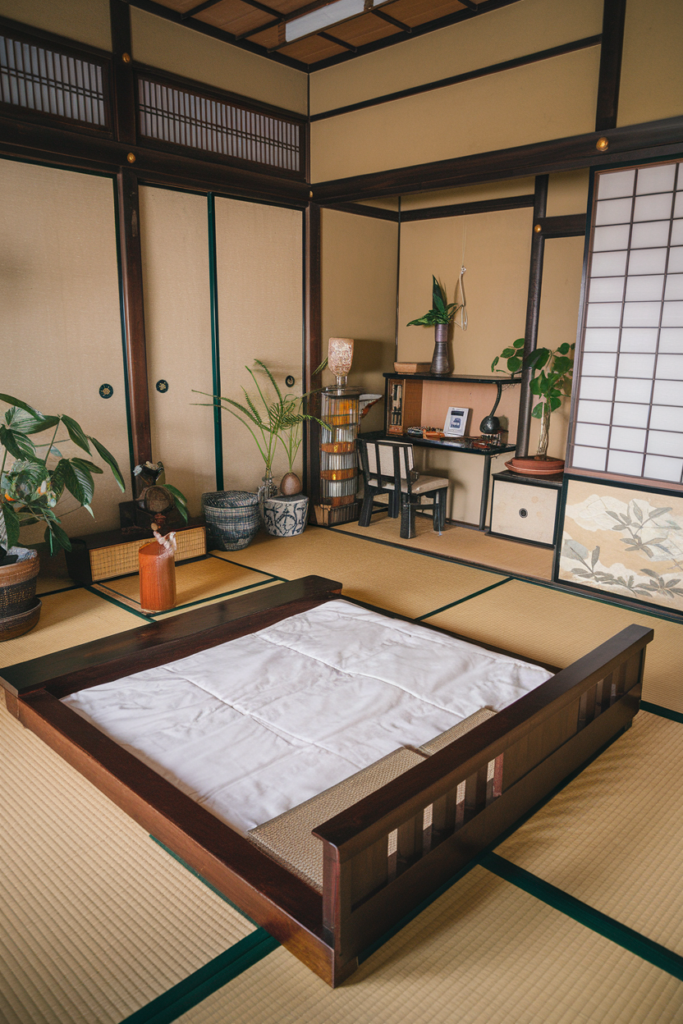
7. Built-in Storage Solutions
Incorporate clever storage solutions that maintain the clean lines of traditional Japanese design. Install fusuma (sliding panels) that conceal closet spaces, or add subtle built-in cabinets with sliding shoji-style doors. Use the space beneath window seats for additional storage. This approach keeps the room clutter-free while providing ample storage options.
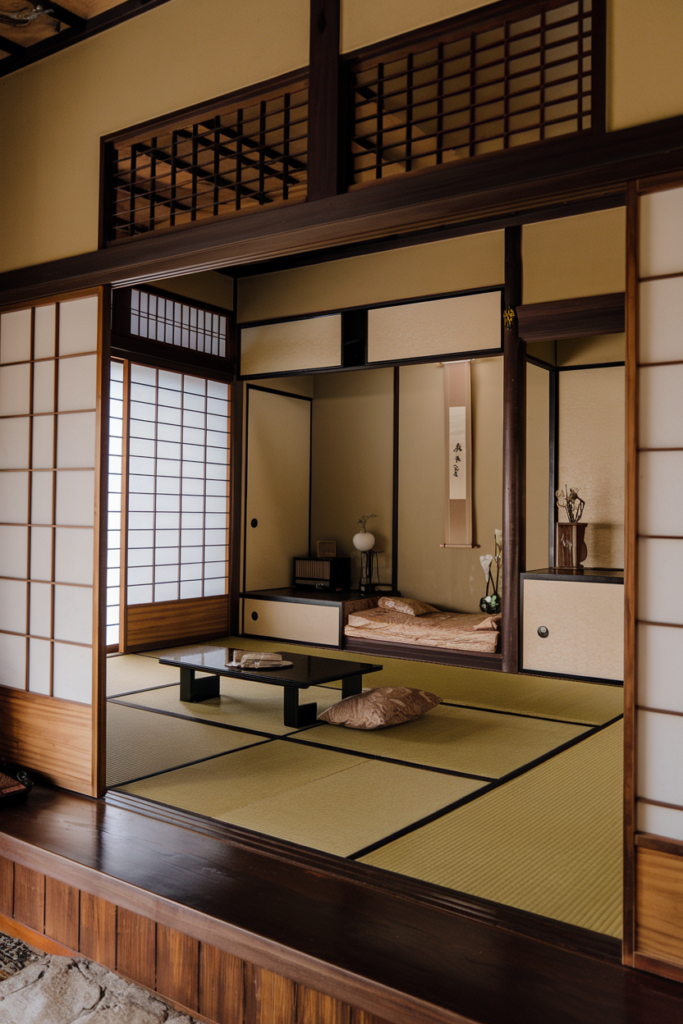
8. Color and Texture Harmony
While traditional tatami rooms often feature neutral colors, don’t be afraid to add subtle pops of color through carefully chosen accessories. Consider soft sage greens, pale blues, or gentle earth tones that complement the natural yellow-green of the tatami. Add texture through natural fiber cushions, bamboo screens, or textured wallpaper on one feature wall.
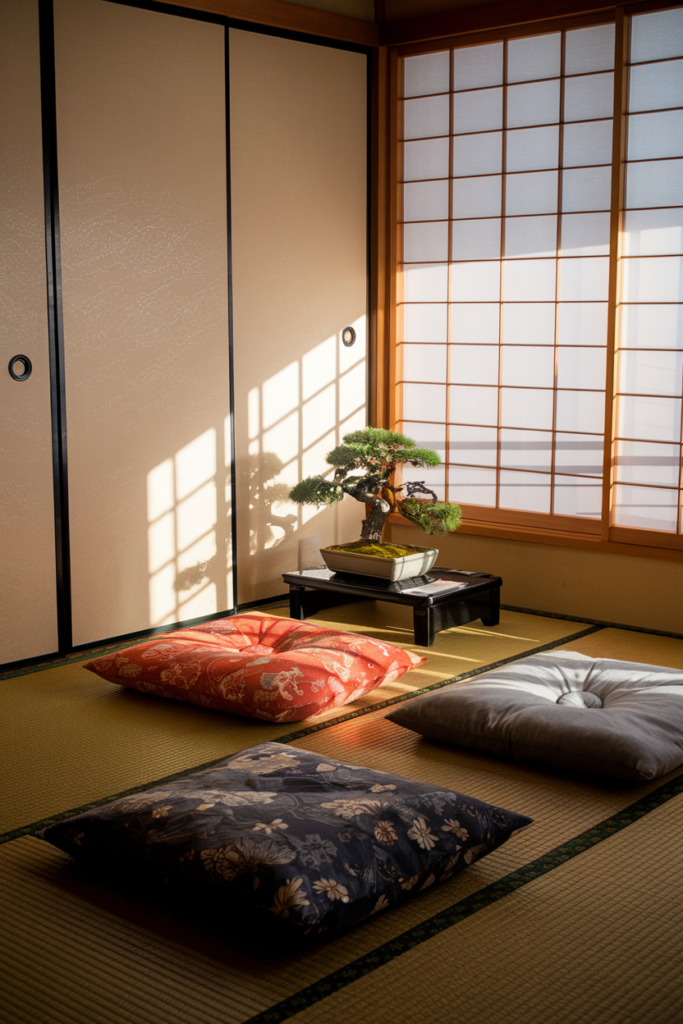
9. Contemporary Art Integration
Modernize your tatami bedroom by incorporating contemporary artwork that complements the traditional setting. Choose pieces that reflect Japanese artistic principles like simplicity and natural themes. Large-scale photographs of nature scenes or abstract pieces in muted tones can create striking focal points without overwhelming the space.
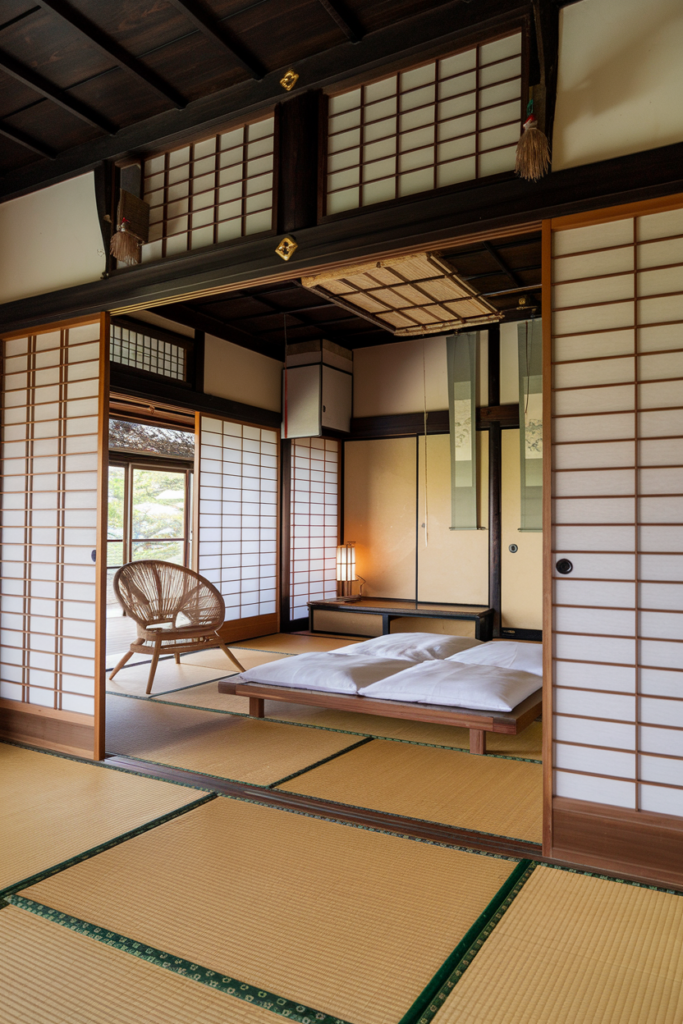
10. Multi-functional Study Space
Create a dual-purpose room by incorporating a low desk (horigotatsu) that can be used for work or study. Choose furniture that can be easily moved or stored, maintaining the room’s flexibility. Install adequate task lighting that complements the room’s overall design. This arrangement maximizes space utility while maintaining the peaceful atmosphere.
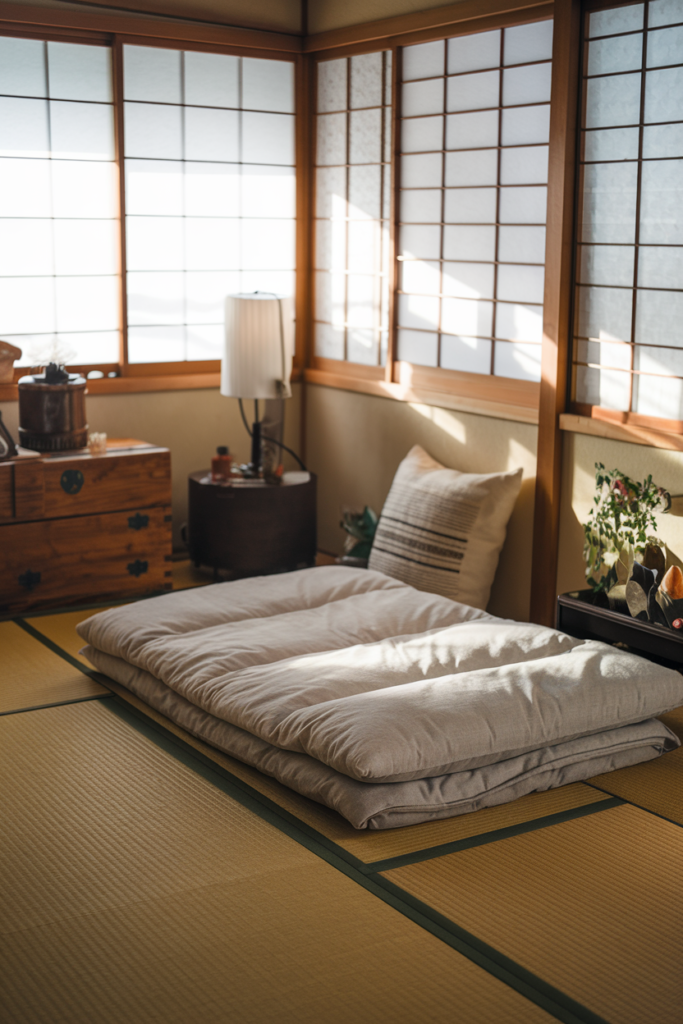
11. Seasonal Adaptability
Design your tatami bedroom to change with the seasons. Use removable cushions and textiles that can be swapped out seasonally. In summer, choose cool cotton and linen materials; in winter, add warm wool throws and thicker cushions. This adaptability reflects the Japanese appreciation for seasonal changes.
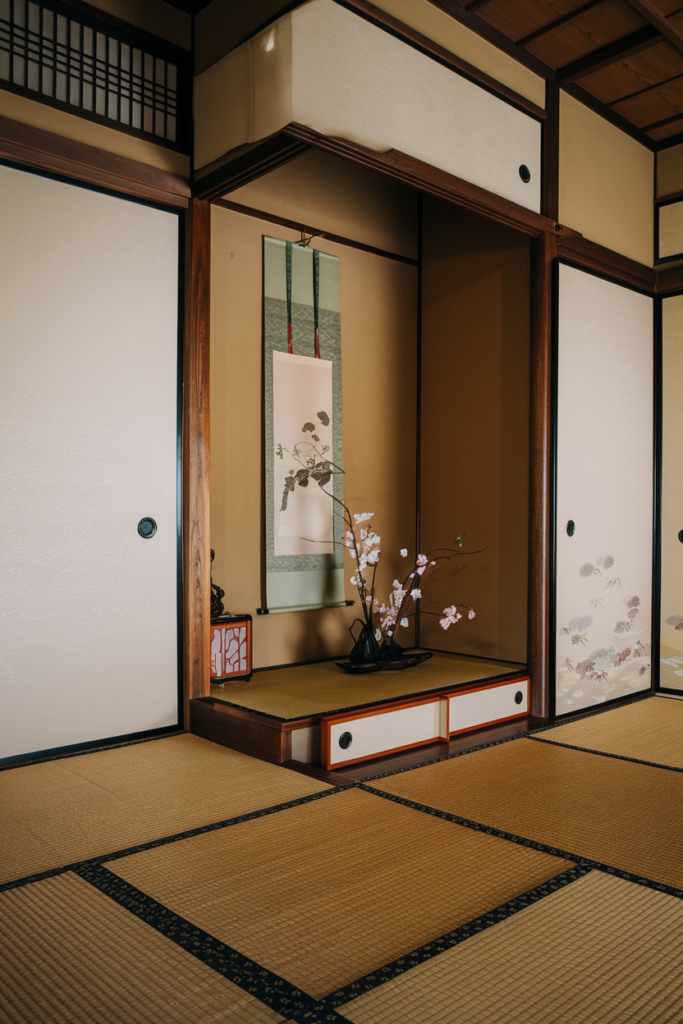
12. Minimalist Lighting Design
Incorporate traditional Japanese lighting elements with a modern twist. Use paper lanterns (chochin) with LED bulbs for ambient lighting. Install recessed lighting around the room’s perimeter to create a soft glow that highlights the tatami’s texture. Add adjustable wall sconces for reading light that can be dimmed to maintain the room’s peaceful atmosphere.
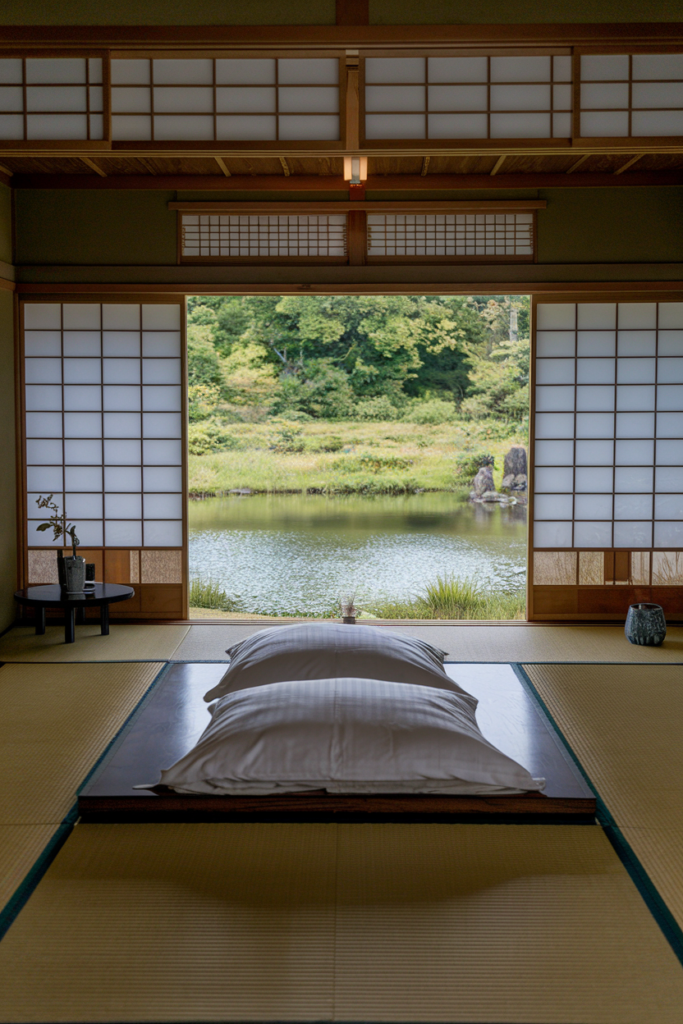
13. Small Space Optimization
For smaller rooms, maximize space with clever design solutions. Use sliding doors instead of hinged ones to save space. Install wall-mounted lights instead of floor lamps. Choose furniture that can serve multiple purposes or be easily stored. This approach maintains the spacious feel of a traditional tatami room even in compact spaces.
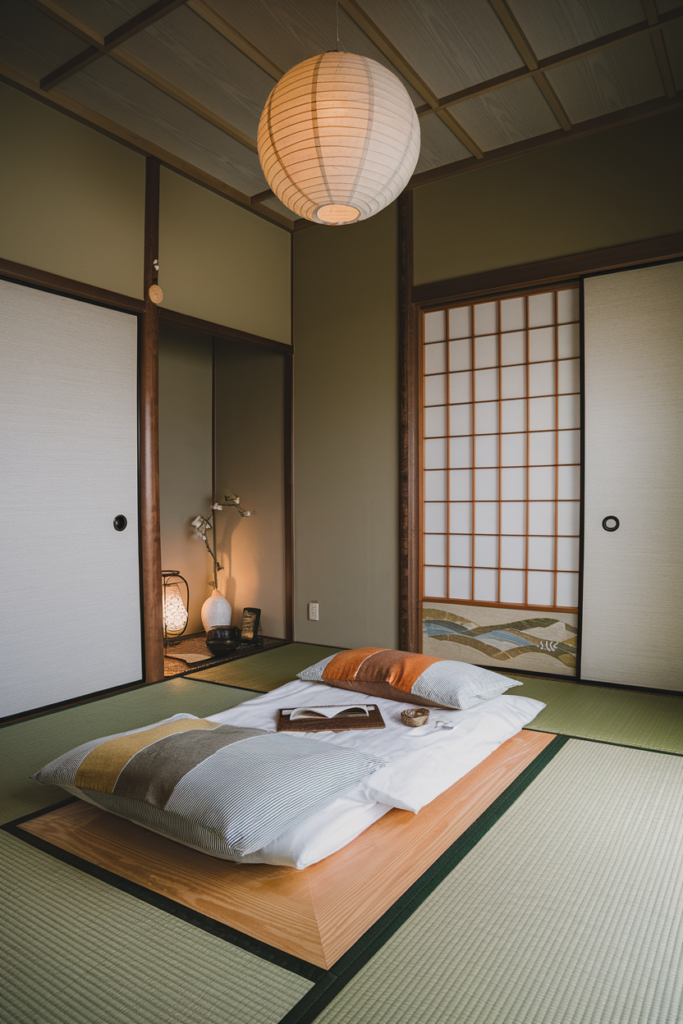
14. Sustainable Materials Focus
Create an eco-friendly tatami bedroom by focusing on sustainable materials throughout the space. Choose organic cotton bedding, bamboo blinds, and furniture made from sustainably sourced wood. Install energy-efficient lighting and natural ventilation systems. This approach honors both traditional Japanese design principles and modern environmental concerns.
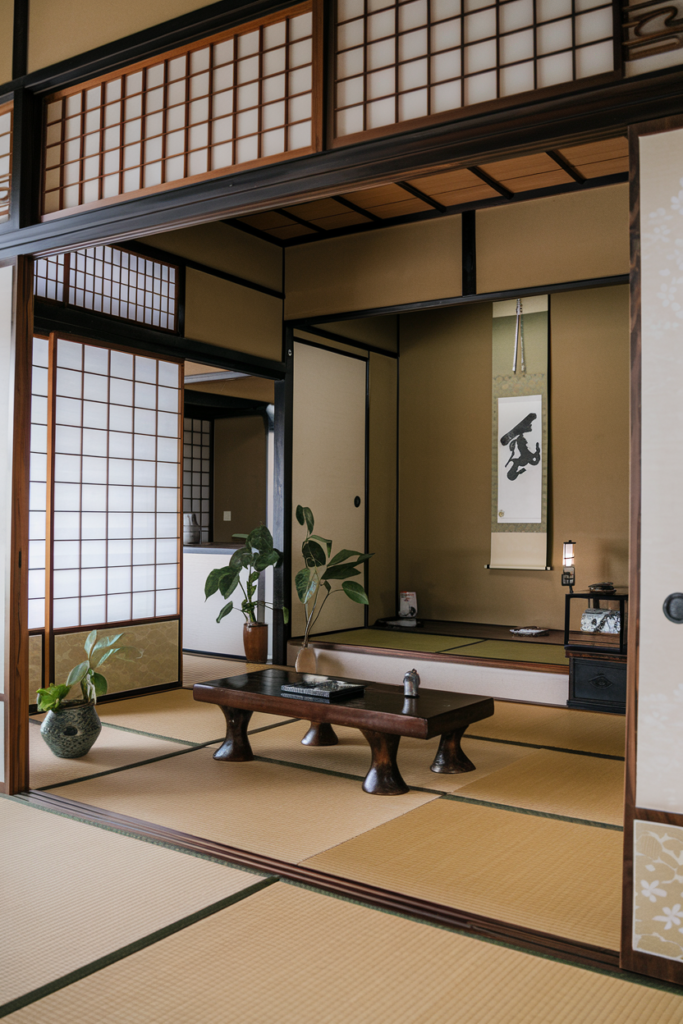
15. Audio-Visual Integration
Thoughtfully incorporate modern technology without compromising the room’s traditional aesthetic. Install hidden speakers for ambient sound, and consider a projector instead of a TV for occasional entertainment. Use clever storage solutions to hide electronic devices when not in use. This balance allows for modern conveniences while maintaining the room’s peaceful atmosphere.
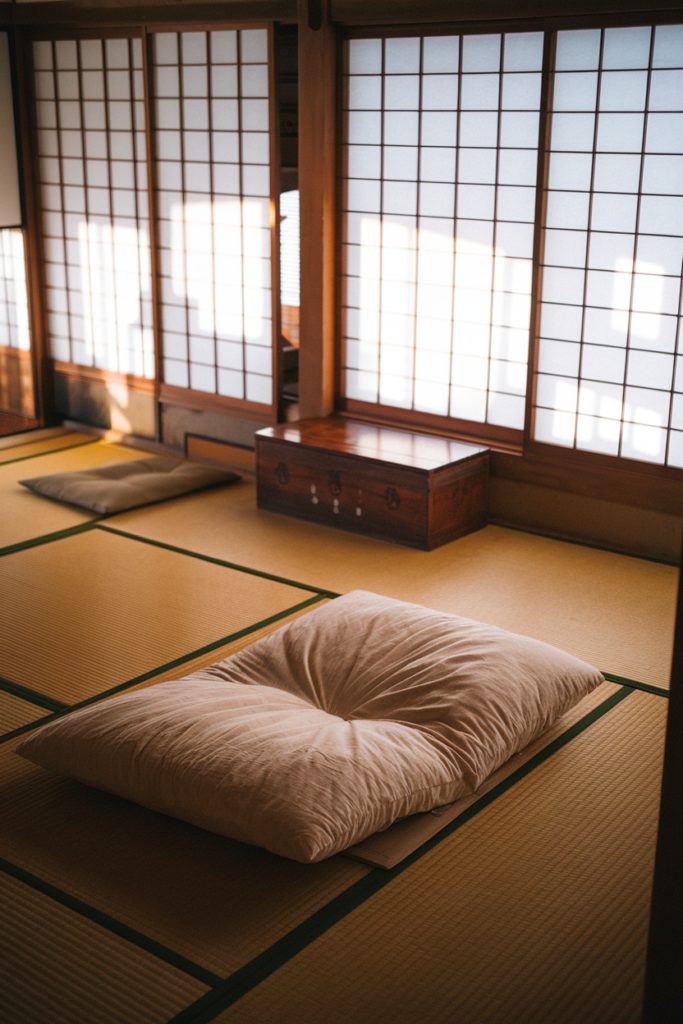
16. Wellness-Focused Design
Transform your tatami bedroom into a complete wellness sanctuary by incorporating elements that promote holistic health. Install an essential oil diffuser disguised within traditional pottery for aromatherapy. Create a dedicated corner for yoga or morning stretches with wall-mounted storage for meditation cushions and yoga mats. Add a small indoor water feature that provides gentle, natural white noise for better sleep. Choose air-purifying plants like bamboo palm or peace lily that thrive in Japanese-style interiors and complement the natural tatami materials.
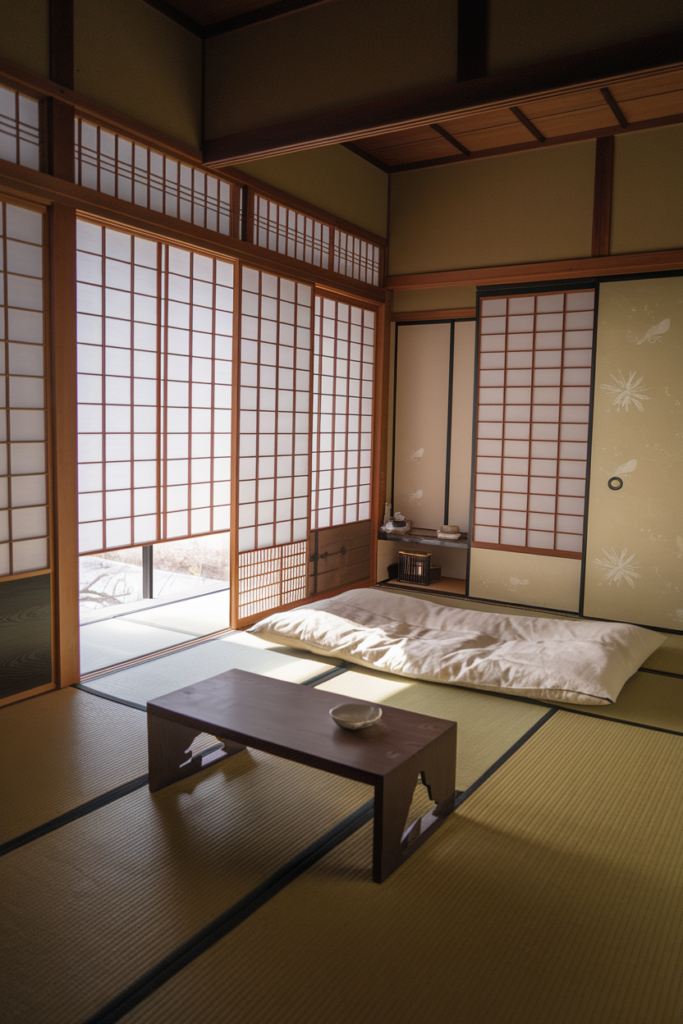
17. Four-Season Room Transition
Design your tatami bedroom to dramatically transform with each season, reflecting the Japanese concept of shiki (seasonal awareness). Install adjustable wooden slats or sudare (bamboo blinds) that can be configured differently for each season’s light requirements. Create a dedicated display area for seasonal decorative elements: cherry blossom arrangements in spring, wind chimes for summer, maple leaves in autumn, and ikebana featuring winter plants. Include storage solutions specifically designed to house off-season items and seasonal bedding.

18. Smart Home Integration with Traditional Aesthetics
Seamlessly blend modern smart home technology with traditional tatami design. Install smart lighting systems that mimic natural daylight patterns, controlled through hidden touch panels designed to look like traditional wood elements. Incorporate motorized shoji screens that can be programmed to open gradually in the morning for natural wake-up cycles. Add hidden charging stations within traditional-looking furniture pieces, and install climate control sensors that maintain optimal humidity levels for tatami preservation while ensuring comfort.
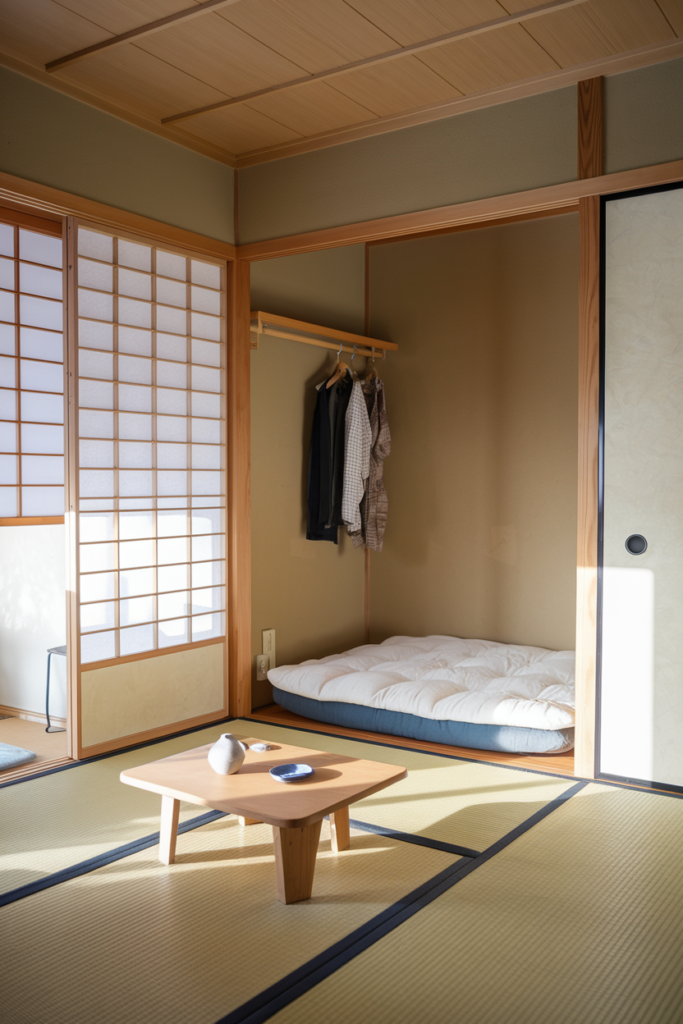
19. Artist’s Retreat Design
Transform your tatami bedroom into an artist’s sanctuary that honors both creative expression and traditional Japanese aesthetics. Install adjustable paper screens that can be used as projection surfaces for digital art or traditional scroll display. Create a convertible workspace with a traditional writing table (kendai) that can be easily stored. Include specialized storage solutions for art supplies designed to look like traditional tansu chests. Add customized lighting that can switch between bright task lighting for artistic work and soft ambient lighting for relaxation, all while maintaining the room’s traditional character.
Practical Considerations for Your Tatami Bedroom
When implementing these design ideas, keep in mind several practical considerations:
Maintenance Requirements
- Regular cleaning with a soft broom
- Rotating mats every few months to ensure even wear
- Keeping the room well-ventilated to prevent moisture buildup
- Prompt attention to any damage or staining
Climate Considerations
- Proper ventilation system to prevent mold in humid climates
- Adequate heating solutions for colder regions
- UV protection for tatami mats in rooms with direct sunlight
Investment and Longevity
- Quality tatami mats can last 5-10 years with proper care
- Professional installation is recommended for best results
- Consider the cost of periodic maintenance and eventual replacement
Conclusion
Creating a tatami bedroom is more than just following a design trend – it’s embracing a centuries-old tradition that promotes harmony, simplicity, and connection with nature. Whether you choose a strictly traditional approach or blend Japanese elements with modern design, a tatami bedroom can become your personal sanctuary from the chaos of daily life.
Remember that the beauty of Japanese design lies in its adaptability and respect for individual needs. Take these 15 ideas as inspiration and adjust them to create a space that truly reflects your lifestyle while honoring the principles of traditional Japanese design. With careful planning and attention to detail, your tatami bedroom can become a peaceful haven that promotes rest, relaxation, and spiritual well-being.





